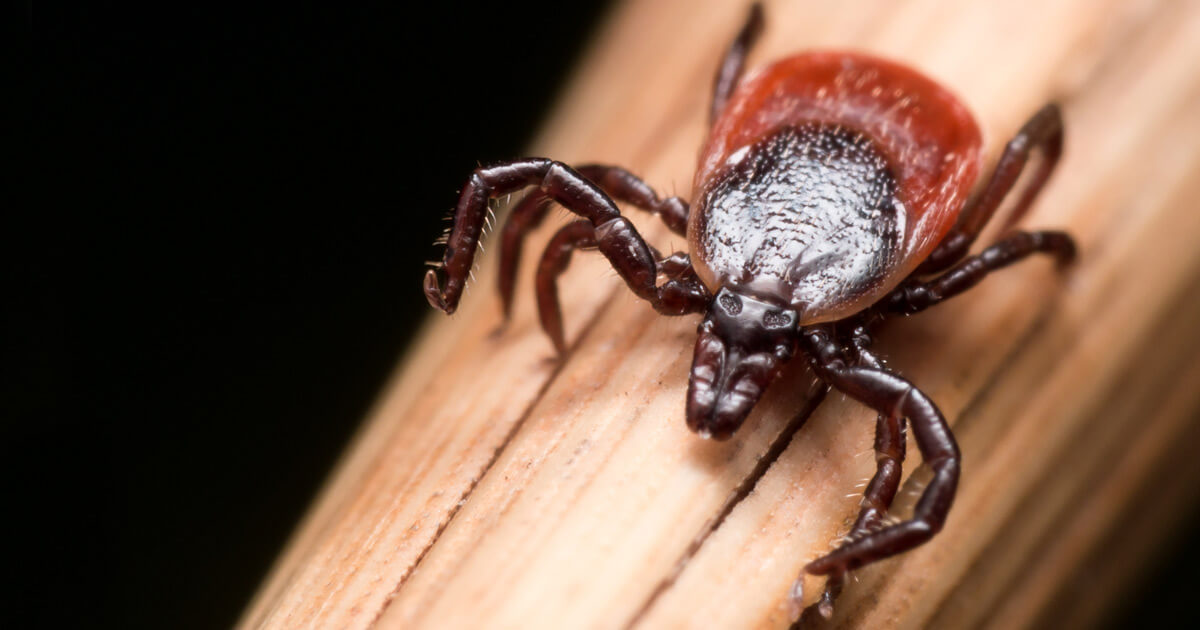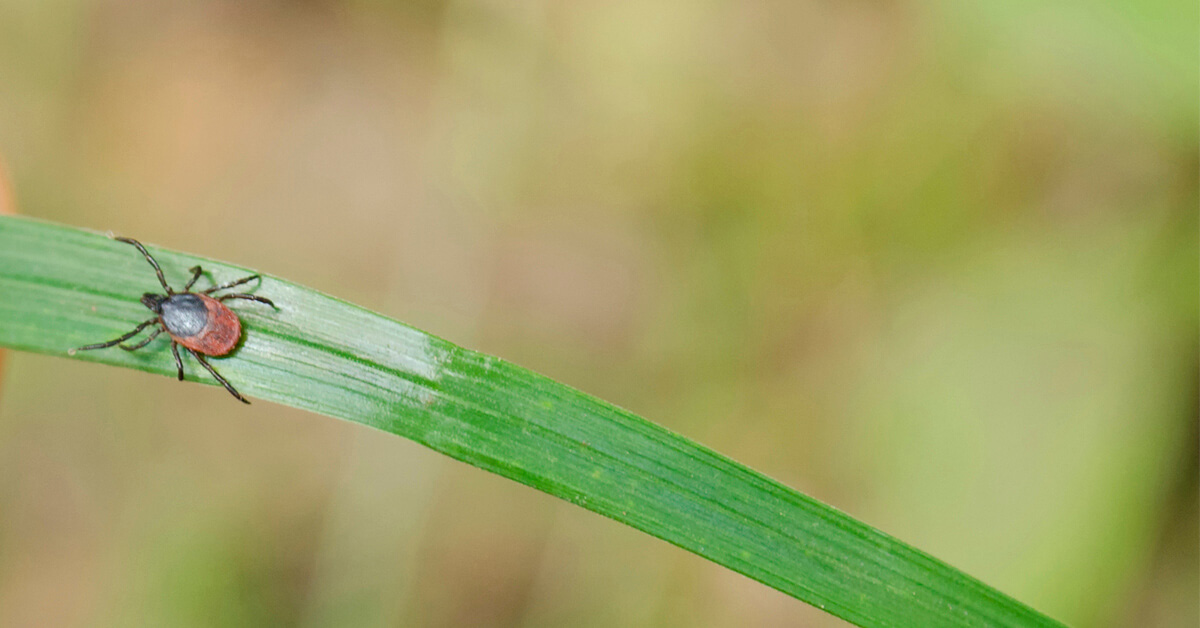How to Kill and Prevent Ticks in Your Yard
Many people associate ticks with rural, heavily wooded areas. But research shows that most human tick bites occur in your own backyard.1 In much of the United States, common ticks stay active all year round. That includes ticks that transmit the pathogens behind Lyme disease and other diseases. By understanding common ticks and their behavior, you can get rid of ticks and protect your family with the best tick treatment for yards.
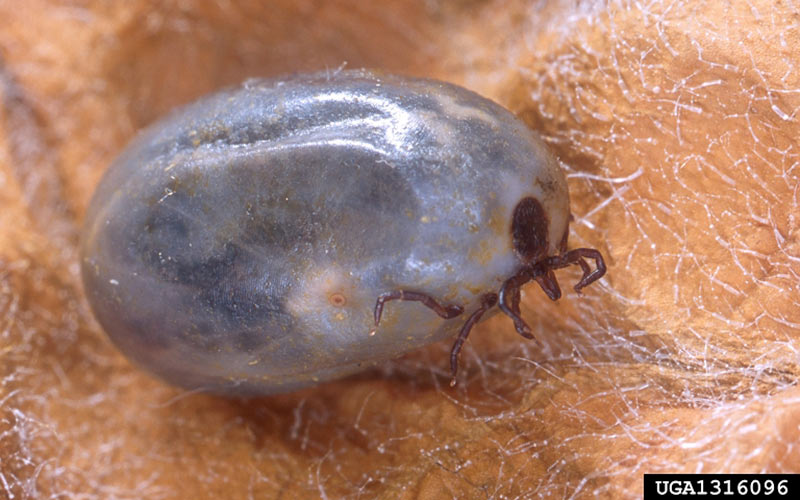
Engorged female ticks can lay thousands of eggs to hatch in your lawn.
Identifying Common Ticks
Adult ticks have teardrop-shaped bodies with eight legs and a small scale, called a scutum, right behind their heads. These pests aren't insects; they're arachnids. They belong to the same pest group as spiders, scorpions and mites. Depending on the species, ticks vary in size, body color and scutum color. The following three tick species commonly bite humans:2
- Black-legged ticks, also known as deer ticks, are about 1/8 inch long or even smaller. Female deer tick bodies are orange-red with a dark brown scutum. Male deer ticks are smaller and entirely dark brown. Common in the Midwest and Northeast, these are the ticks behind Lyme disease.
- American dog ticks, also known as wood ticks, are more than twice as large as black-legged ticks. The females have dark brown bodies with a light tan scutum. Males are dark brown with a brown scutum outlined in tan. Found in the eastern and central U.S., these ticks transmit pathogens that cause Rocky Mountain spotted fever.
- Lone star ticks are larger than black-legged ticks, but smaller than American dog ticks. Females have red-brown bodies marked with a lone, white star at the scutum base. Males have red-brown bodies ringed with splotches of white. Common in the East and South, these aggressive biters are connected to several diseases.
Ticks go through four life stages: egg, larva, nymph and adult. Newly hatched tick larvae are extremely small. Though similar in appearance to nymphs and adults, tick larvae have six legs instead of eight. Mature female ticks feed heavily, lay eggs and die. Blood-filled females can weigh 120 times their normal weight and measure more than 1/2 inch. Depending on the species, a female tick can lay up to 18,000 eggs.1
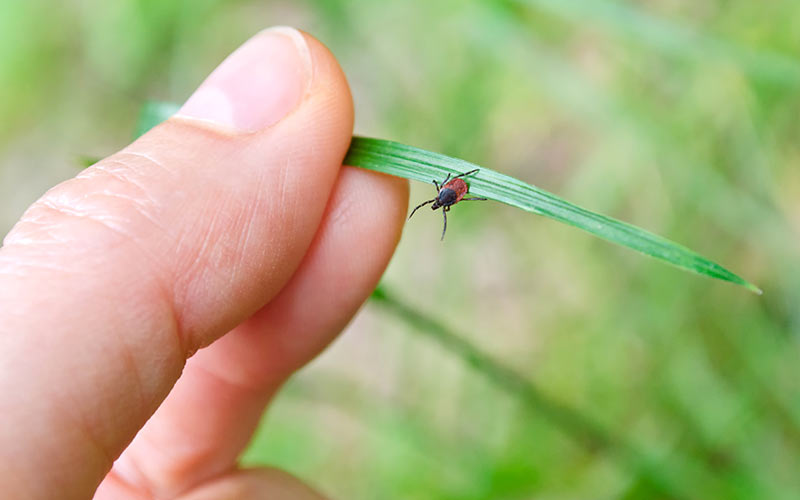
Ticks wait on grass and weeds with outstretched legs for new hosts to arrive.
Understanding Tick Behavior
Even when ticks stay active year-round, tick activity peaks between April and September — the same times you and your family are most active outdoors. Most tick bites in humans and tick-borne disease transmission trace back to nymphs, which are most active from May through July.1
At all life stages, ticks must have a blood meal to survive. Some types of ticks choose a different animal host at each stage; others stick to one host throughout their life. Ticks can take up to three years to complete their life cycle.
Ticks gather in brushy or weedy areas with unmaintained grasses. In wooded residential areas, they move to lawns, groundcover plantings and landscape shrubs. There they wait for potential hosts — from rodents and reptiles to birds, deer, dogs and kids — to come by.
Then ticks climb aboard their new host, move to thin-skinned body parts, attach themselves and start to feed on the host's blood. As they feed, disease-infected ticks transmit pathogens that cause disease.
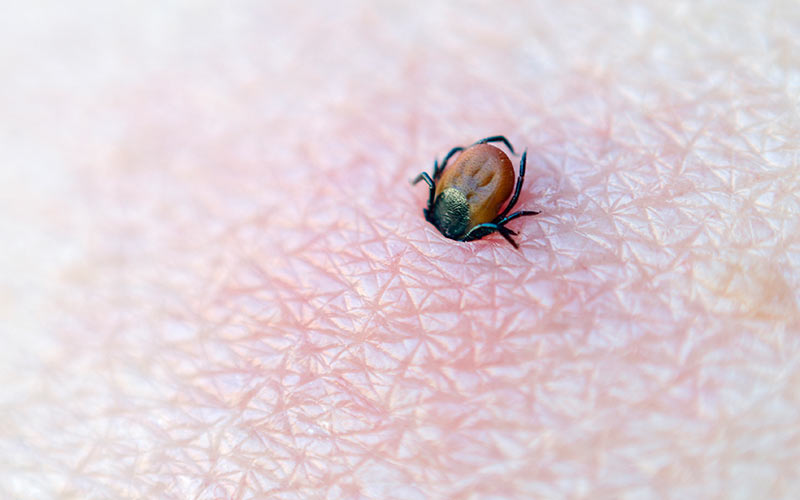
Preventative lawn treatments protect your family and pets from tick bites.
Protecting Against Ticks and Bites
Keeping your family safe from backyard ticks and diseases calls for more than a tick repellant for yards. You need effective tick treatment that kills ticks and protects your family, including your pets, from their return. Amdro brand offers several powerful pesticides for a multilayered approach to tick control:
- Start with full-yard tick treatment with Amdro Quick Kill Lawn Insect Killer Granules. Applied with a standard lawn spreader, this product kills existing ticks by contact within 24 hours. Then this tick treatment for yards keeps killing new ticks for up to three months. After application, water the treated area lightly to release the formula's active ingredients. Pay special attention to the outer 9 feet of your lawn area.1 That's where most ticks congregate.
- Reinforce your perimeter with Amdro Quick Kill Insect Killer for Home Perimeter granules. This tick killer for yard perimeters kills ticks by contact and provides residual control to prevent new tick infestations for up to three months. These mulch-penetrating granules come in a convenient shaker container that's ideal for use around your home's perimeter, including patios and other outdoor entertainment areas.
- Get same-day control of tick hiding places with Amdro Quick Kill Insect Killer for Lawn & Landscape liquids. Use the Concentrate formula with a pump-style garden sprayer or attach the Ready To Spray container to your garden hose. These tick sprays for yards kill existing ticks by contact in lawns, shrubs, flower gardens and foundation plantings. Give special emphasis to tall grasses, weeds or brush around your lawn's perimeter.
By taking action with tick-killing yard treatments, you can protect your family and pets from the threat of tick bites and tick-related disease. At Amdro, we're here to help you put an end to troublesome ticks and other disruptive pests. It's time to get back to enjoying your yard with family and friends again.
Always read product labels thoroughly and follow instructions.
Sources:
1. K.C. Stafford, "Tick Management Handbook," The Connecticut Agricultural Experiment Station.
2. Centers for Disease Control and Prevention, "Tickborne Diseases of the United States," U.S. Department of Health & Human Services.


